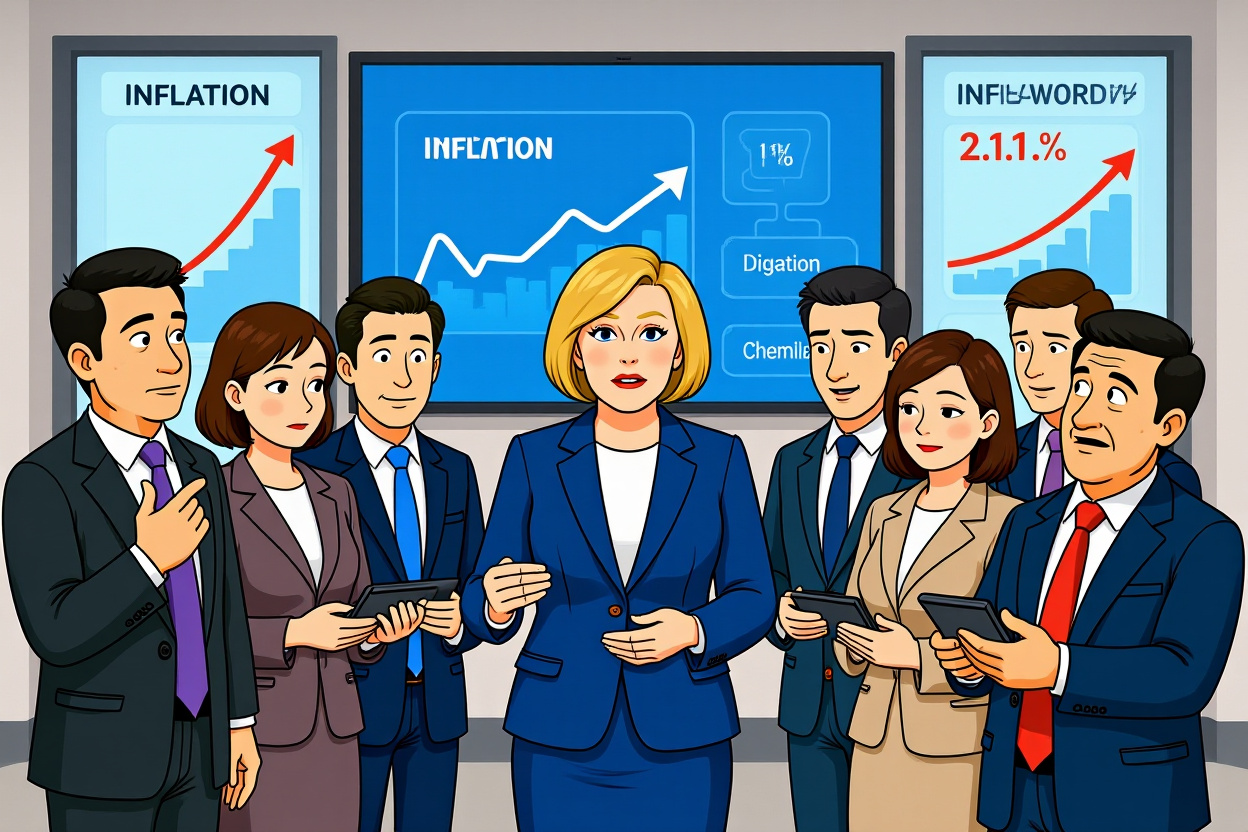– ECB maintains deposit facility rate at 2%, matching market expectations
– President Lagarde declares disinflation process complete with inflation near target
– Eurozone inflation projected at 2.1% for 2025, stabilizing around 2% medium-term
– Internal divergence emerges on future rate path amid external uncertainties
– Economic growth forecasts revised upward to 1.2% for 2025
The European Central Bank’s September meeting delivered a pivotal moment in monetary policy as officials signaled a major shift in their inflation assessment. For the second consecutive meeting, the Governing Council held rates steady, maintaining the deposit facility rate at 2% while President Christine Lagarde made a significant declaration: the disinflation process has reached its conclusion. This announcement marks a critical juncture for the eurozone economy as policymakers transition from fighting high inflation to managing stability around their 2% target.
ECB Maintains Steady Policy Stance
The European Central Bank’s decision to keep interest rates unchanged reflects a carefully calibrated approach to monetary policy normalization. The deposit facility rate remains at 2%, with the main refinancing operations rate and marginal lending facility rate holding at 2.15% and 2.40% respectively.
Unanimous Decision Signals Policy Consensus
President Lagarde emphasized that the decision was unanimous among Governing Council members, indicating strong consensus around the current policy stance. This unity suggests that policymakers believe they have reached an appropriate level of restriction after eight consecutive rate cuts that brought rates down from 4% to the current 2% level.
Asset Purchase Programs Continue Gradual Unwind
The ECB continues to reduce its balance sheet through the steady runoff of its Asset Purchase Programme (APP) and Pandemic Emergency Purchase Programme (PEPP) portfolios. Officials noted that sovereign bond markets remain orderly, and the transmission protection instrument (TPI) was not discussed at this meeting, indicating confidence in market functioning.
Inflation Battle Declared Over
President Lagarde’s statement that the inflation battle is over represents a watershed moment in ECB communication. After years of struggling with soaring price pressures, the central bank now believes inflation has been sufficiently tamed.
Inflation Projections Near Target Levels
The latest ECB projections show headline inflation averaging 2.1% in 2025, followed by 1.7% in 2026 and 1.9% in 2027. Core inflation, which excludes volatile food and energy prices, is expected to moderate from 2.4% in 2025 to 1.9% in 2026 and 1.8% in 2027. These projections indicate that the inflation battle is over in the medium term, with prices stabilizing around the ECB’s 2% target.
New Phase of Policy Management Begins
With the inflation battle over, the ECB enters a new phase where minor fluctuations around the target won’t automatically trigger policy responses. This approach allows for greater flexibility and acknowledges that perfect price stability involves acceptable minor deviations from the precise 2% target.
Diverging Views on Future Policy Path
While consensus exists around the current stance, differing opinions are emerging about what comes next. This divergence highlights the complex balancing act facing policymakers as they navigate the post-inflation battle environment.
Dovish Voices Suggest Possible December Cut
Lithuanian Central Bank Governor Gediminas Šimkus has suggested that if the euro strengthens significantly or external uncertainties intensify, a December rate cut remains possible. This perspective emphasizes the need for flexibility should economic conditions deteriorate.
Hawkish Concerns Focus on Upside Risks
ECB Executive Board member Isabel Schnabel has expressed concerns about potential inflationary pressures from trade tariffs and increased fiscal spending. These hawkish voices caution against declaring victory too early in the inflation battle, suggesting that underlying pressures might persist.
External Challenges and Uncertainties
The eurozone economy faces multiple external headwinds that could influence future policy decisions. These factors complicate the ECB’s task of maintaining stability now that the immediate inflation battle is over.
Federal Reserve Policy Divergence
The Federal Reserve is expected to begin its own rate-cutting cycle, potentially creating currency volatility and capital flow challenges for the ECB. If the Fed adopts a more aggressive easing stance, it could strengthen the euro and complicate the ECB’s export-oriented growth model.
Trade Policy and Geopolitical Tensions
Recent U.S. tariff policies and immigration restrictions create additional uncertainty for European exporters. While recently negotiated tariff adjustments provide short-term relief, the long-term impact remains uncertain and could affect the eurozone’s fragile economic recovery.
Political Instability in Key Member States
France’s political crisis, resulting in the fifth prime ministerial change in two years, raises concerns about policy consistency in the eurozone’s second-largest economy. This political uncertainty could undermine economic confidence and recovery efforts across the region.
Economic Resilience and Growth Prospects
Despite these challenges, recent data suggests the eurozone economy demonstrates remarkable resilience. The improved growth outlook supports the ECB’s assessment that the inflation battle is over while providing room for continued policy normalization.
Upward Revision to Growth Forecasts
The ECB upgraded its 2025 growth projection to 1.2% from 0.9%, reflecting improving business activity and consumer confidence. While 2026 growth was slightly downgraded to 1.0%, the 2027 forecast remains at 1.3%, indicating sustained though modest expansion.
Business Activity Shows Continued Expansion
August data indicates ongoing expansion in eurozone business activity, with German business confidence reaching its highest level since 2022. This resilience suggests the economy can withstand current challenges without requiring additional monetary stimulus.
Investment Implications and Market Outlook
With the inflation battle over, investors must adjust their strategies for the new monetary policy environment. The transition from fighting inflation to maintaining stability creates different opportunities and risks across asset classes.
Fixed Income Positioning in Stable Rate Environment
Market pricing suggests less than a one-third chance of additional rate cuts in 2025, with rates likely to remain stable through next year. This environment favors quality bonds and duration strategies that benefit from stable financing conditions.
Equity Market Opportunities
European equities may benefit from reduced uncertainty about borrowing costs and sustained economic growth. Sectors sensitive to interest rates, such as real estate and utilities, could particularly benefit from the declared end of the inflation battle.
Currency Stability Considerations
The euro’s stability remains crucial for export-oriented European companies. With the inflation battle over, currency fluctuations may become more influenced by relative growth differentials and external factors rather than monetary policy divergence.
Navigating the New Monetary Policy Landscape
The ECB’s declaration that the inflation battle is over marks a significant milestone for investors and policymakers alike. While challenges remain from both internal divergences and external uncertainties, the overall direction suggests a period of policy stability and careful calibration. Market participants should focus on quality assets, currency hedging strategies, and selective exposure to European growth stories while monitoring how the post-inflation battle environment evolves. For ongoing analysis of ECB policy developments and eurozone economic trends, subscribe to our premium research service for real-time updates and expert commentary.




